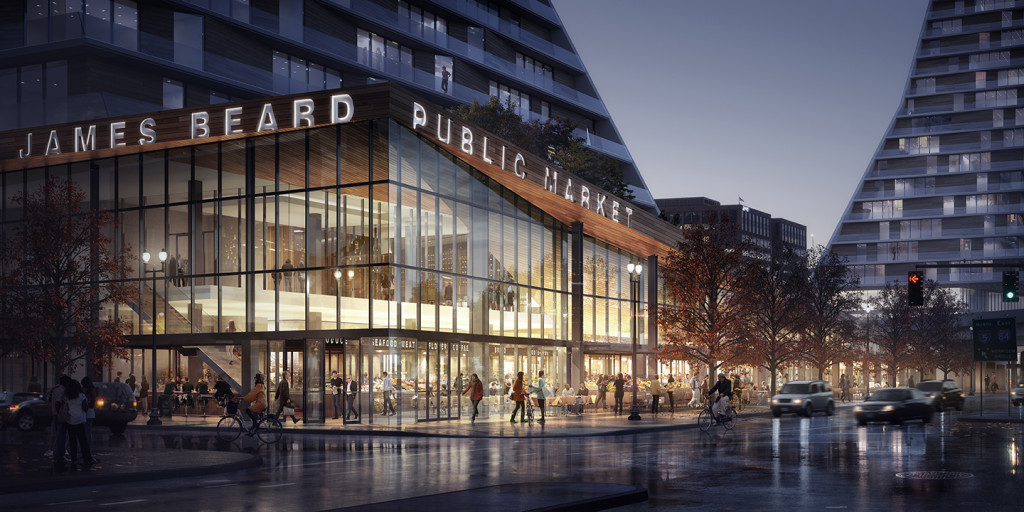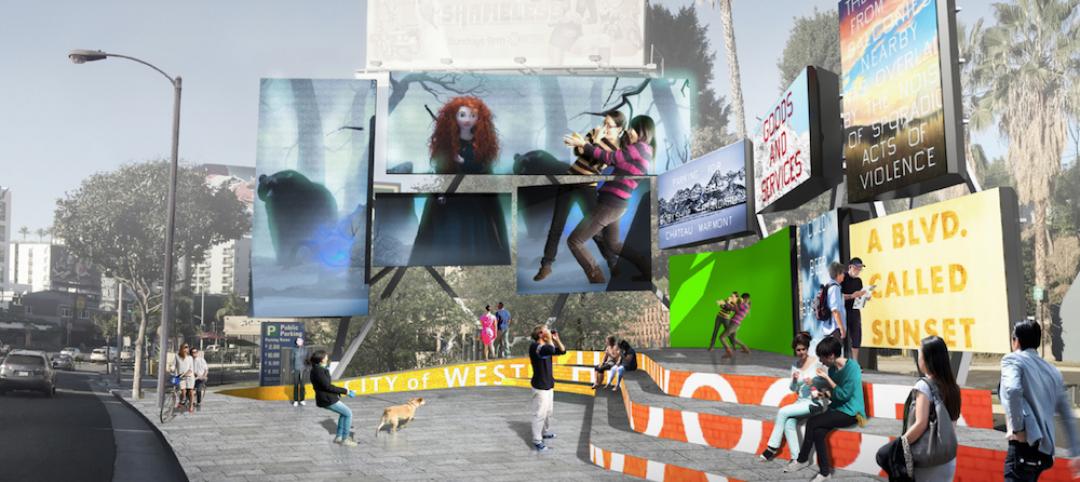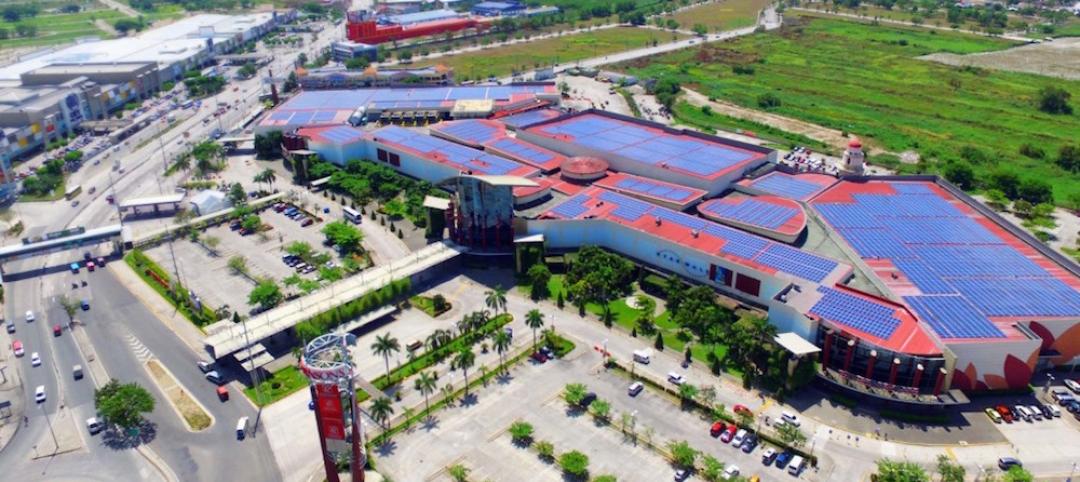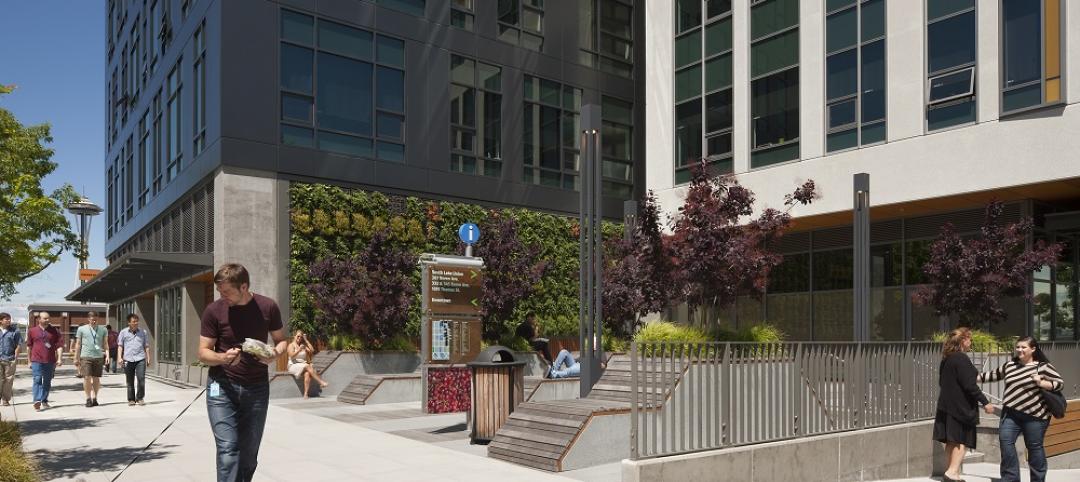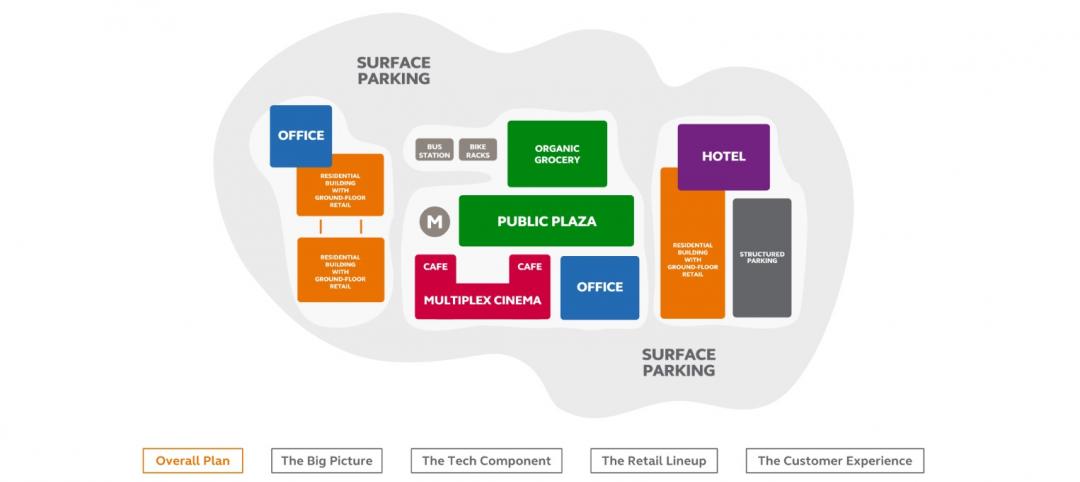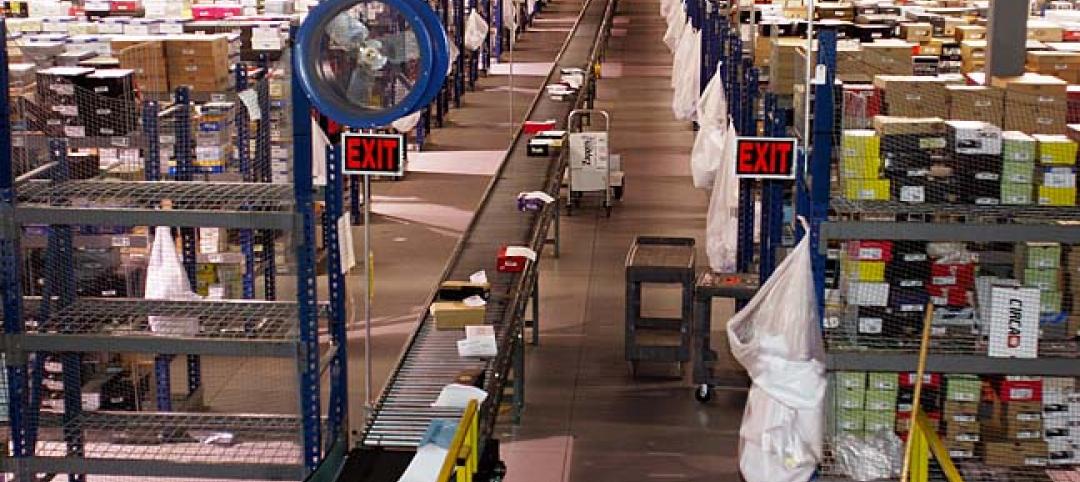It’s been more than 70 years since Oregon’s largest city, Portland, has had a public market. In response to the city's thriving culinary scene, residents have formed the non-profit organization James Beard Public Market, and Snøhetta designed what will be Portland’s first year-round market since 1942, when the Portland Public Market closed down.
Named after prominent gastronomical figure James Beard, who Dezeen reports “developed an interest in food at an early age after accompanying his mother on shopping trips to Portland markets,” the market will reintroduce the hustle and bustle of commerce and public vibrancy to the western end of Morrison Bridge on the Willamette River.
The bridge, which currently splits the market’s future site in half and blocks pedestrian access from three sides, will be realigned by the architects with access ramps, and a new pedestrian through-road will make the new market accessible from all directions.
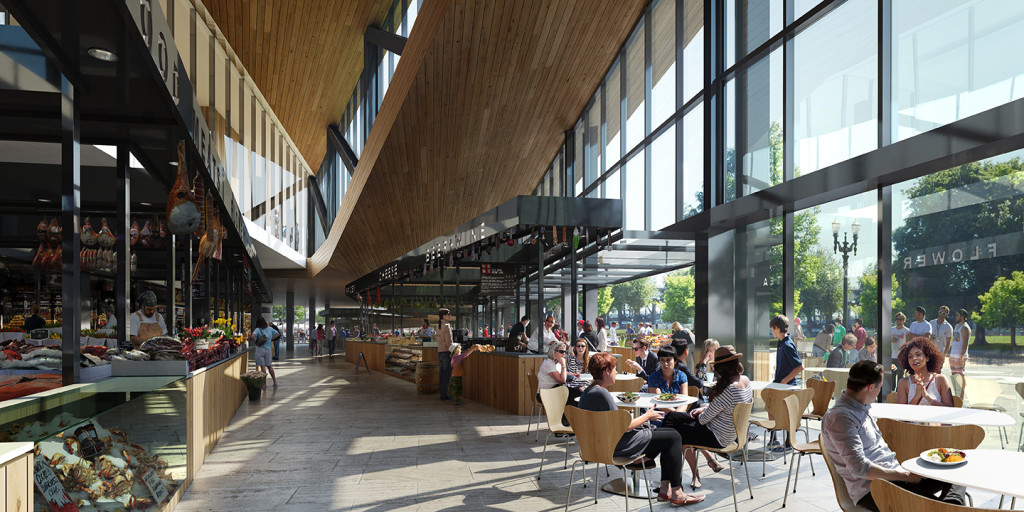
Snøhetta’s design will have room for 60 permanent stalls, 30 flexible stands, restaurants, a teaching kitchen, and an events space.
"A generous pedestrian street will run north and south, swelling at the sunniest portion of the site, to create an outdoor room for vendor stalls, seating, and green areas for Pacific Northwest native plantings," the design team added in a statement.
Construction is set to start in 2016. This isn’t the Oslo-based firm’s only project in Oregon—they have been called on to revitalize an abandoned paper mill on the Willamette Falls near Oregon City into a mixed-use public destination, giving the public up-close access to the falls for the first time.
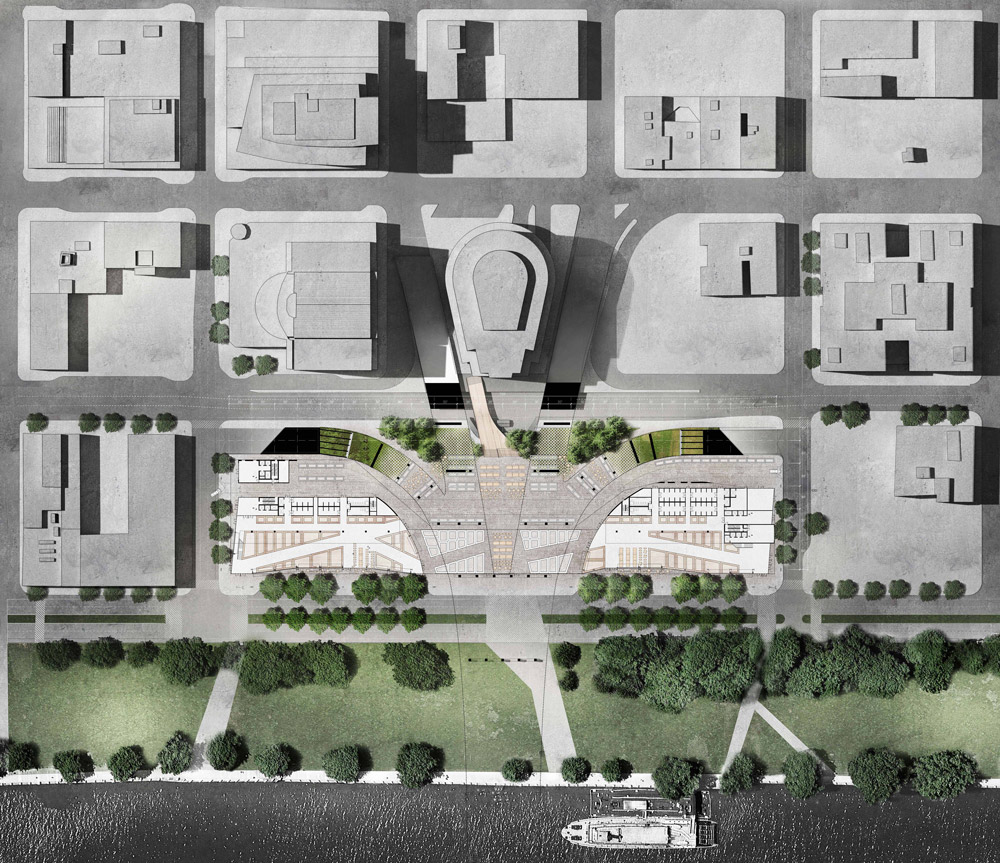
Related Stories
Retail Centers | Jun 14, 2016
Zaha Hadid and Gensler among finalists for Sunset Strip billboard design competition
The concepts are curvy, sleek, and multidimensional, and feature sharp digital displays.
Market Data | Jun 3, 2016
JLL report: Retail renovation drives construction growth in 2016
Retail construction projects were up nearly 25% year-over-year, and the industrial and office construction sectors fared well, too. Economic uncertainty looms over everything, however.
Shopping Centers | Jun 3, 2016
Developer Robinsons Land adds powerful PV arrays to 10 malls in the Philippines
The Robinsons Starmills mall in San Fernando recently turned on a 2.9 megawatt rooftop PV plant.
Retail Centers | May 20, 2016
Apple reveals new retail store design in San Francisco
The prototype store borrows features from Apple's hotly anticipated new headquarters in Silicon Valley, which is set to open early next year.
Retail Centers | May 10, 2016
5 factors guiding restaurant design
Restaurants are more than just places to eat. They are comprising town centers and playing into the future of brick-and-mortar retail.
Retail Centers | Apr 27, 2016
How retailers can create spaces to appeal to Millennial shoppers
Today's college students have a bit more spending power than past generations. In the third part of the The New Student series, GS&P's Brandon Bell highlights how brick-and-mortar retailers can draw in Millennial shoppers.
Retail Centers | Mar 24, 2016
Wayfinding innovation: 'Easter eggs' highlight directories of new Seattle corporate campus
The wayfinding master plan for a tech campus features maps, directions, and, yes, "Easter eggs": colorful photos of bicycles, crayons, bouncy balls, cranberries, and other items that people may buy online from this tech company.
Retail Centers | Mar 16, 2016
How analytics create better in-store experiences and added value for retailers
As shopping center owners and operators look to use technology in innovative ways to support their brick-and-mortar tenants, how do developers balance creative digital solutions with economic feasibility?
Retail Centers | Mar 16, 2016
Food and technology will help tomorrow’s malls survive, says CallisonRTKL
CallisonRTKL foresees future retail centers as hubs with live/work/play components.
Warehouses | Mar 8, 2016
Big box warehouse construction continues to increase
As online shopping becomes more popular, many retailers are rushing to build big box warehouses to store and ship items in an effort to keep up with demand.


